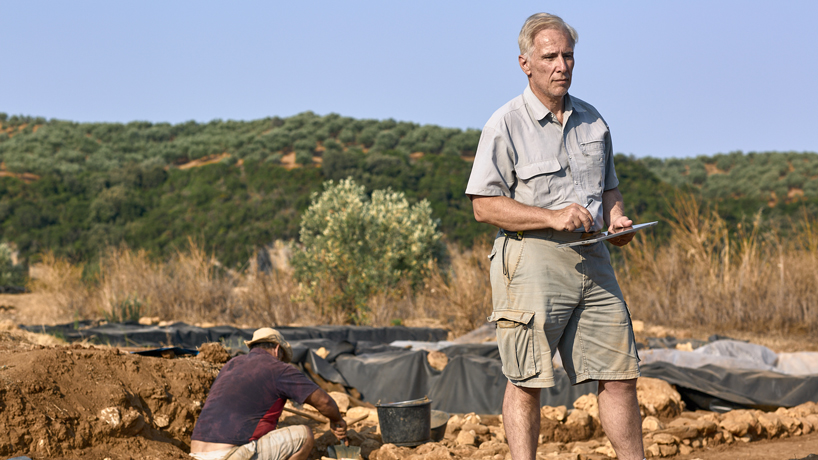
Michael Cosmopoulos, the Hellenic Government-Karakas Foundation Professor of Greek Studies at UMSL, directs the Iklaina Archaeological Project, which was recently featured in The New York Times. (Photo courtesy of Michael Cosmopoulos)
Michael Cosmopoulos has been working to unearth the ancient Peloponnesian village of Iklaina in southwestern Greece and the secrets it holds about the origins of democratic government for more than 15 years.
Cosmopoulos, the Hellenic Government-Karakas Foundation Professor of Greek Studies in the Department of History at the University of Missouri–St. Louis, serves as the director of the Iklaina Archaeological Project, conducted under the auspices of the Archaeological Society at Athens and funded through UMSL’s Greek professorship as well as through major grants from the National Endowment for the Humanities, National Science Foundation and National Geographic Society.
The New York Times featured the project Monday in an article headlined “Unearthing Everyday Life at an Ancient Site in Greece.” Writer and photographer Matt Stirn visited the site, a Bronze Age capital that dates to the time of the Trojan War, between 1500 B.C. and 1200 B.C. It’s believed to be one of the sites mentioned in Homer’s epic poem, The Iliad, as one of the capitals of the Greek kings who fought in the war.
As Stirn noted in his story, systematic excavations of Iklaina revealed the remains of a Cyclopean terrace, a multistory building foundation made of massive boulders. Such foundations are typically only found at the sites of palaces and important Mycenaean capitals.
Using magnetometry and electric resistivity, researchers discovered dozens of buildings surrounding the terrace as part of what Stirn described as a “labyrinth of structures extended to an area of nearly 32 acres. Iklaina was not simply a confined palace or elite residence. It was an entire city — with houses, streets and workshops.”
“If we want to reconstruct ancient society and learn how it developed, we cannot just look at palatial sites and monuments,” Cosmopoulos told Stirn. “We need to seek a balanced view of everyday life.”
The work Cosmopoulos has led at Iklaina has yielded evidence of the early development of a two-tiered system of government and transformed what had previously been believed about the origins of states and governments in ancient Greece.
As Cosmopoulos told Stirn, “students have played a significant role in the excavations, which have acted as a ‘field school’ for people interested in becoming professional archaeologists.” They’re aiming to help students understand how lessons from ancient cultures are relevant to modern society.
Media Coverage
The New York Times














